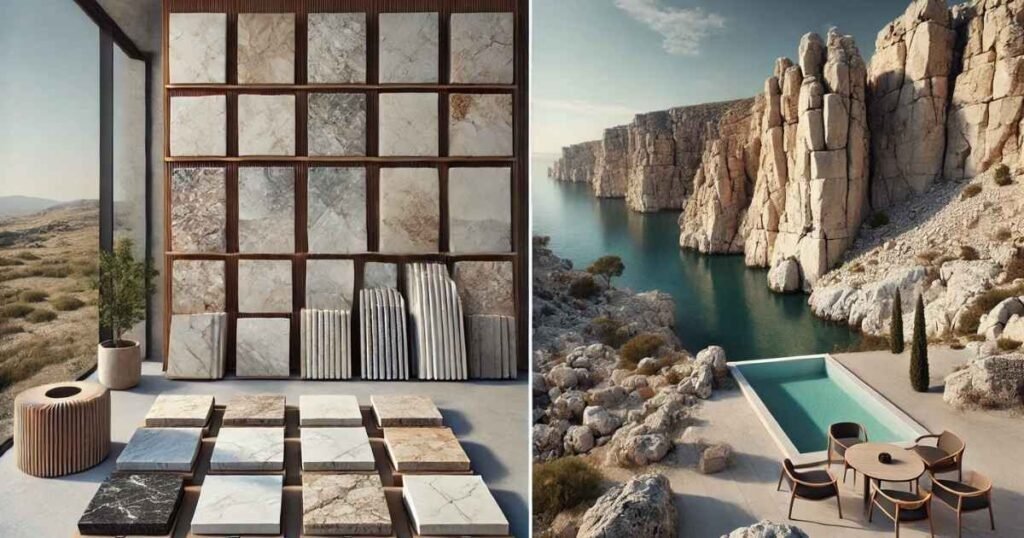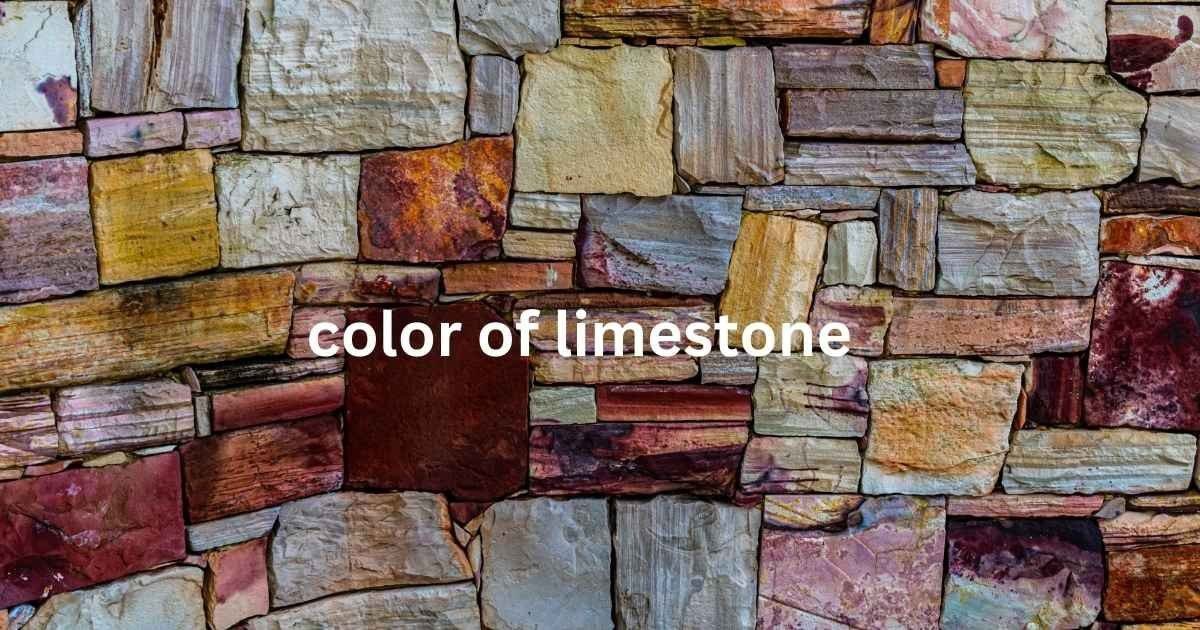Introduction
When it comes to building materials, few options are as versatile and timeless as limestone. This natural stone has been used for centuries in architecture, sculpture, and construction. One of the most remarkable features of limestone is its wide range of colors, which can dramatically affect the aesthetics of a space or structure. From warm, creamy whites to cool, sophisticated grays, the color of limestone offers endless possibilities for design projects.
But what determines the color of limestone? And how do you choose the right shade for your project? In this detailed guide, we will explore the factors that influence the color of limestone, the various shades available, and how to select the perfect limestone color for your needs. Whether you’re working on a commercial construction project, landscaping your garden, or designing a home interior, understanding the color of limestone is key to making the best choice.
What is Limestone?
Limestone is a sedimentary rock that forms mainly from the skeletal fragments of marine organisms like coral and shells. Over millions of years, these materials compact and solidify into a rock that is both durable and aesthetically pleasing. Limestone is widely used in construction, landscaping, and design due to its versatility, strength, and natural beauty.
One of the most distinctive aspects of limestone is its color, which can vary significantly depending on the minerals and organic materials present during its formation.
The Importance of Color in Limestone

The color of limestone plays a critical role in determining its suitability for different applications. For example, light-colored limestones are often used for interior spaces because they create a bright, open atmosphere, while darker limestones can add a sense of sophistication and elegance to exteriors and flooring.
The color of limestone is not just an aesthetic consideration—it can also provide insight into the stone’s composition, durability, and weather resistance. By understanding the different colors of limestone, you can make informed decisions about which type will work best for your project.
Ultimate Guide to Limestone Colors, Features, and Effective Tips
| Limestone Color | Key Features & Aesthetic Appeal | Effective Maintenance Tips |
|---|---|---|
| White Limestone | Bright, elegant, and enhances natural lighting, commonly used in modern interiors. | Apply a protective sealant to prevent stains and discoloration. Regular cleaning with a pH-neutral solution is recommended. |
| Beige Limestone | Warm, neutral, and widely used in flooring, countertops, and walls for a classic look. | Clean regularly with a gentle stone cleaner to maintain its natural appearance. Avoid acidic or harsh chemicals. |
| Gray Limestone | Contemporary and versatile, often chosen for outdoor patios, pathways, and commercial spaces. | Use a weather-resistant sealer to prevent dirt accumulation and moisture absorption. Routine sweeping is essential. |
| Blue Limestone | Rich, deep hue with a unique texture, ideal for exterior landscaping and architectural designs. | Apply a UV-resistant sealant to protect against color fading from prolonged sun exposure. |
| Brown Limestone | Earthy and rustic, perfect for garden paving, pool surrounds, and exterior walls. | Use a water-repellent sealer to minimize moisture damage and weathering effects. |
| Yellow Limestone | Warm, Mediterranean-inspired tone, enhances facades, stairs, and driveways. | Shield from excessive sun exposure and apply a limestone-safe protector to retain vibrancy. |
| Black Limestone | Sleek, bold, and luxurious, often used in accent walls and high-end exterior designs. | Regular sealing with an enhancing sealer helps prevent dullness and watermarks. |
| Red Limestone | Striking and decorative, adds contrast and uniqueness to architectural projects. | Protect with a high-quality sealant to prevent fading and surface wear. |
What Determines the Color of Limestone?
Mineral Content
The primary determinant of limestone’s color is its mineral content. Common minerals that contribute to limestone’s coloring include:
- Calcite: This is the main component of limestone, and in its purest form, calcite is white. Limestones that are high in calcite often have light, white, or off-white tones.
- Iron Oxides: When iron oxides are present in limestone, they can give the stone shades of red, yellow, or brown. The amount of iron oxide will determine how intense the color is.
- Clay: Clays found in limestone can add darker, earthy tones, such as gray or brown.
- Organic Material: Some limestones contain organic material like plant debris or algae, which can impart greenish hues to the stone.
Environmental Factors
The environment in which limestone forms also affects its color. For instance:
- Marine Environments: Limestones formed in shallow, warm marine environments tend to be lighter in color due to the high concentration of calcite.
- Terrestrial Environments: Limestones formed in areas with more vegetation or clay deposits often have darker, earthier tones.
Fossil Content
The presence of fossils can also influence the color of limestone. For example, fossiliferous limestone often has a mottled appearance due to the presence of fossil fragments, which can create visual interest with subtle variations in color.
Common Colors of Limestone and Their Uses
White Limestone
White limestone is often associated with purity, simplicity, and modern elegance. It has been used throughout history in some of the world’s most iconic structures, including the Taj Mahal. White limestone is particularly popular for:
- Interior walls: Its light color creates a clean and bright atmosphere, making it ideal for minimalist or contemporary designs.
- Flooring: White limestone floors can make spaces feel larger and more open.
- Exterior facades: For a classic, timeless look, white limestone is often used in exterior facades of luxury homes and buildings.
Cream and Beige Limestone
Cream and beige limestone are warm, inviting colors that add a sense of comfort and sophistication to any space. These shades are commonly used for:
- Outdoor patios: The neutral tones of beige and cream limestone blend seamlessly with natural surroundings, making them a popular choice for outdoor spaces.
- Fireplaces: These colors are ideal for creating cozy, inviting fireplace designs.
- Countertops: Cream-colored limestone countertops are both durable and elegant, offering a natural alternative to granite or marble.
Gray Limestone
Gray limestone is a versatile and sophisticated option that works well in both modern and traditional designs. Its cool, neutral tones make it a popular choice for:
- Flooring: Gray limestone floors provide a sleek and contemporary look, ideal for kitchens, bathrooms, and entryways.
- Cladding: Gray limestone is often used in architectural cladding for commercial buildings, offering durability and a refined aesthetic.
- Garden paths: In landscaping, gray limestone can create striking walkways or retaining walls.
Black Limestone
Black limestone adds drama and elegance to any space. Its deep, rich color is perfect for creating contrast and can be used in a variety of ways:
- Accent walls: Black limestone makes a bold statement when used for accent walls or feature areas.
- Outdoor paving: Black limestone is often used for outdoor paving, where it provides a striking contrast against green lawns or colorful plants.
- Modern interiors: In modern designs, black limestone is used to create a sleek, sophisticated aesthetic.
Yellow and Gold Limestone
Yellow and gold limestone bring warmth and energy to both indoor and outdoor spaces. These shades are especially popular for:
- Exterior cladding: Yellow limestone can brighten up a building’s exterior, making it stand out in both urban and rural environments.
- Garden features: Gold limestone can be used for garden sculptures, fountains, and benches, adding a luxurious touch to outdoor spaces.
Green Limestone
Green limestone is less common but highly sought after for its unique and striking appearance. It is often used in:
- Architectural projects: Green limestone can be used to create unique architectural elements, adding a pop of color to facades, columns, or interior walls.
- Landscaping: Its earthy tones make green limestone a perfect addition to natural landscapes, blending beautifully with greenery.
How to Choose the Right Color of Limestone for Your Project
Choosing the right color of limestone for your project is crucial to achieving the desired aesthetic and functional outcomes. Here are some tips to help you make the right decision:
Consider the Surrounding Environment: When selecting a color of limestone, consider the surrounding environment. For example, if you’re using limestone for an outdoor patio, you might want to choose a color that complements the natural landscape. Neutral tones like cream or beige often work well in outdoor spaces, while darker colors like gray or black can add contrast.
Think About the Mood You Want to Create: The color of limestone can also influence the mood of a space. Lighter colors like white and cream create an airy, open atmosphere, making them ideal for smaller spaces or areas that need to feel bright and inviting. Darker shades like gray and black, on the other hand, can add a sense of drama and sophistication.
Take Durability into Account: Different colors of limestone can indicate different levels of durability. For example, darker limestones tend to be denser and more resistant to wear and tear, making them a good option for high-traffic areas like flooring or outdoor paving. Lighter-colored limestones may be softer and more prone to scratching, so they may be better suited for decorative features.
Match Your Style: Your personal style and the overall design aesthetic of the space should also influence your choice of limestone color. For a modern, minimalist look, white or grey limestone may be a perfect choice. For a more traditional or rustic design, warm tones like beige or gold might be a better fit.
Maintaining the Color of Limestone
Proper care is essential to maintaining the natural color and durability of limestone. Applying a high-quality sealant helps protect the surface from stains, moisture, and general wear, especially for lighter limestone, which is more prone to discoloration. Regular cleaning with a pH-neutral cleaner preserves its original look, while avoiding harsh chemicals prevents surface damage. Consistently removing dust and debris helps keep the stone fresh and free from buildup. Additionally, prolonged exposure to direct sunlight may cause fading, so using UV-resistant sealants or placing limestone in shaded areas can help retain its color and extend its lifespan.
Why Choose Limestone for Your Space?
Limestone is a durable and aesthetically versatile natural stone that enhances both indoor and outdoor spaces. Available in a variety of colors, it is widely used in flooring, wall cladding, countertops, and exterior paving. Proper care, including sealing, gentle cleaning, and UV protection, ensures that its natural beauty and durability are preserved over time.
Regardless of whether you prefer white limestone for a minimalistic interior, gray limestone for outdoor elegance, or black limestone for a modern statement, following the right maintenance techniques will extend its longevity and enhance its visual appeal.
FAQs About the Color of Limestone
1. What determines the color of limestone?
The color of limestone is primarily determined by its mineral content, environmental factors, and fossil content.
2. Can limestone color change over time?
Yes, exposure to the elements, especially sunlight and moisture, can cause some limestone colors to fade or weather over time.
3. Is white limestone more expensive than other colors?
White limestone is often considered more desirable due to its purity and elegance, which can make it more expensive than other colors.
4. Does limestone color affect its durability?
Yes, some colors, especially darker shades, can indicate a denser and more durable type of limestone.
5. What is the most common color of limestone?
Beige and cream are among the most common colors of limestone, but it is available in a wide range of shades.
6. Can I use different colors of limestone in the same project?
Yes, many designers and architects combine different colors of limestone to create contrast and visual interest in a project.
7. What is the best color of limestone for outdoor use?
Gray, beige, and cream are popular choices for outdoor limestone due to their neutral tones and durability.
8. Can limestone be dyed or colored?
While it is possible to dye limestone, it is not recommended as the natural color of limestone is one of its most attractive features.
9. Does fossil content affect limestone color?
Yes, fossil content can create variations in limestone color, often resulting in a mottled or textured appearance.
10. How do I protect the color of limestone from fading?
Sealing your limestone and avoiding prolonged exposure to direct sunlight can help protect its color from fading.
Conclusion
The color of limestone is a critical factor in determining its aesthetic appeal and functional use. From light, airy whites to bold, dramatic blacks, limestone offers an incredible range of colors that can be tailored to suit any design project. By understanding the factors that influence limestone color, and how to care for and maintain it, you can choose the perfect limestone for your project and ensure it remains beautiful for years to come.
Whether you’re designing a sleek modern interior, creating an inviting outdoor space, or building a timeless architectural masterpiece, the color of limestone can make all the difference. Take the time to explore your options and choose the shade that best suits your style and needs.
Ready to elevate your project with the natural beauty of limestone? Discover the perfect color of limestone today!






